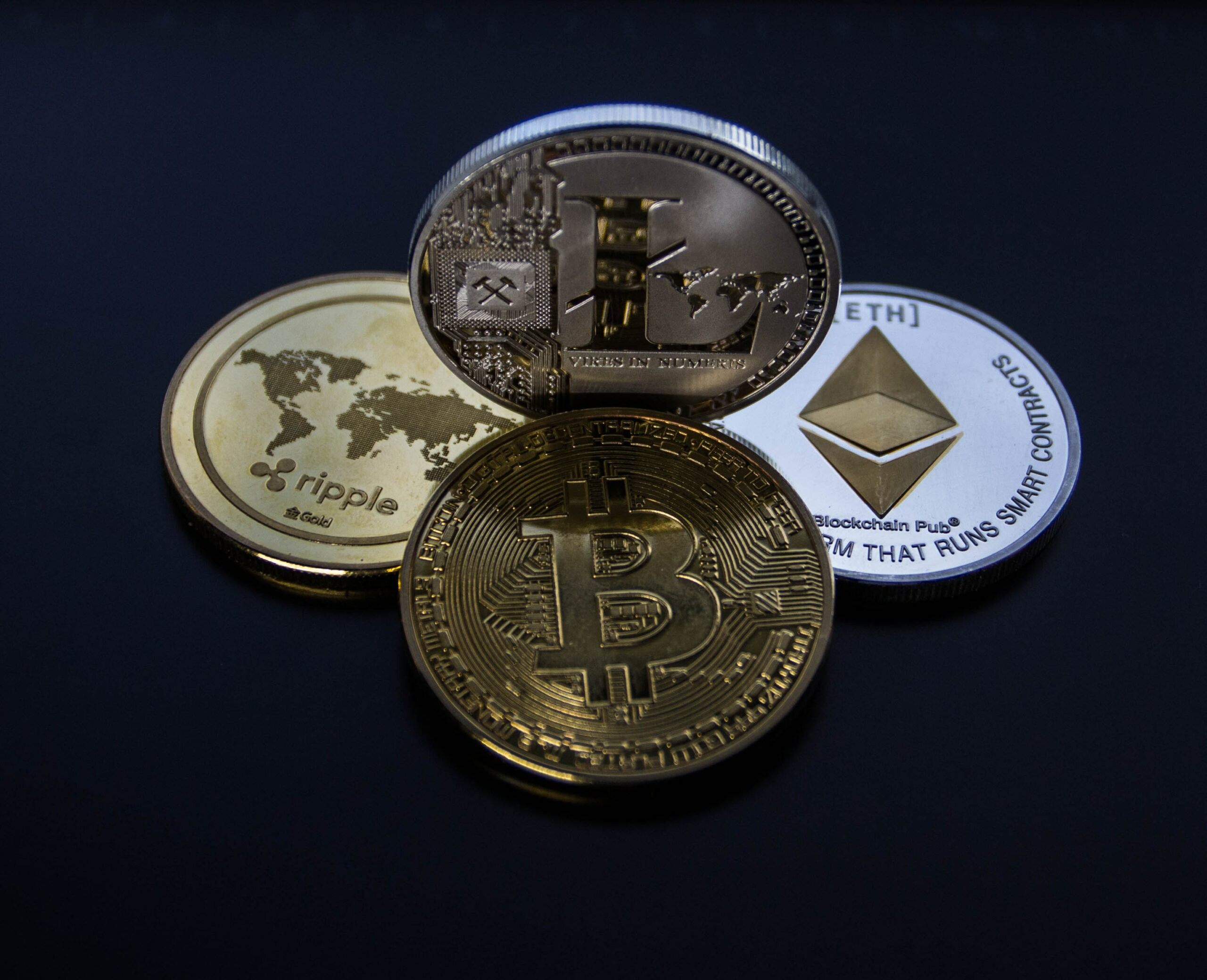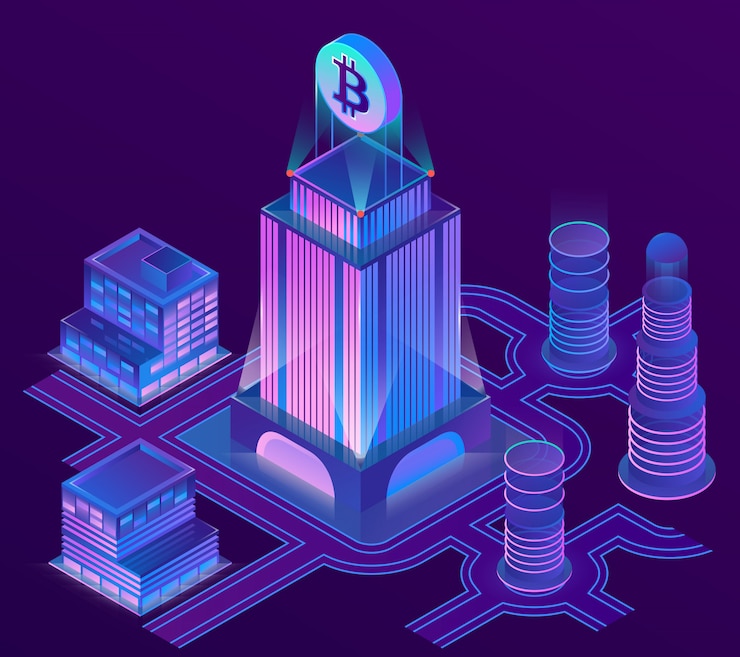In a financial world increasingly dominated by digital currencies, understanding the nature and appearance of Bitcoin becomes crucial. Unlike traditional currencies, Bitcoin exists primarily in a digital format, posing challenges in visual representation.
This article delves into the essence of Bitcoin’s form, exploring both its digital existence and its physical representations. Readers will gain insight into the technology behind Bitcoin, its tangible versions, and the vital role of private keys in managing these digital assets.
What Does a Physical Bitcoin Look Like? All You Need to Know
Contrary to popular belief, Bitcoin fundamentally exists as a series of codes on distributed networks, not as a tangible object. This digital nature often proves challenging to comprehend, leading to the creation of physical tokens.
These tokens typically incorporate a secure strip concealing private keys, which are integral to accessing actual digital Bitcoin. This article examines the appearance and varieties of these physical representations, offering a clear understanding of their role and significance.
Does Actual Bitcoin Have a Physical Form Somewhere?
Bitcoin, at its core, is a digital asset overseen by a decentralized ledger known as the blockchain. This ledger was initiated by an enigmatic entity, Satoshi Nakamoto, and meticulously records the ownership and transfer of Bitcoin.
Each transaction on the blockchain is linked to unique addresses, comprising 26-35 alphanumeric characters. For instance, a typical Bitcoin address might appear as “1Lbcfr7d77fo839uuia4ZnX714”.
The Essence of Bitcoin Ownership
Ownership in the Bitcoin network is defined not by physical possession but by control over private keys associated with a public address. While anyone can send Bitcoin to a public address, only the individual with the corresponding private key can authorize its transfer.
Therefore, what one possesses are not Bitcoins per se, but the private keys to manage them. This distinction underscores why many opt for cold storage, an offline method of securing private keys, thus enhancing security against online threats.
Visualizing the Bitcoin Ledger
Despite its intangible nature, the Bitcoin blockchain is accessible for public viewing via explorers like Blockstream or blockchain.com. These platforms allow users to scrutinize transaction histories, thereby reinforcing the transparency inherent in Bitcoin’s structure.
Who Made the First Physical Bitcoin?
The concept of a tangible Bitcoin was first materialized by Mike Caldwell, a fervent Bitcoin advocate. In 2011, he introduced the Casascius coin, a metal token representing Bitcoin. Each coin featured a tamper-evident hologram hiding a paper with private keys to a specific amount of Bitcoin. Once the seal is broken, the keys can be used to transfer Bitcoin to a digital wallet.
Casascius Bitcoin: A Pioneer in Physical Tokens
Caldwell’s Casascius coins, named after his username, were initially minted in brass. These coins contained denominations ranging from 1 to 1,000 bitcoins and eventually expanded to include silver and gold versions, as well as bars. Notably, these were created during Bitcoin’s infancy, when its value was below $2.
Titan Coins: Elevating the Standard
In 2014, Titan Bitcoin emerged, offering a more luxurious version of physical Bitcoin tokens. These coins, crafted with one Troy ounce of 24-karat gold, were available in 0.5 and 1 BTC denominations. Similar to Casascius coins, Titan coins featured a magnetic strip and provided owners with a unique code to track the Bitcoin value on their website.
Key Considerations for Physical Bitcoin Tokens
- Collectible Value: Physical Bitcoin tokens, especially early versions like Casascius and Titan coins, hold significant collectible value, often exceeding their Bitcoin worth;
- Security Implications: The security of physical tokens hinges on the integrity of the tamper-evident seal. Once broken, the embedded private key becomes vulnerable;
- Legal and Regulatory Aspects: The production and distribution of physical Bitcoin tokens encounter unique legal and regulatory challenges, reflecting the evolving landscape of digital currency legislation;
- Investment Perspective: These tokens offer a unique investment avenue, blending the appeal of physical collectibles with the dynamic nature of digital currency investments.
Why Create Tangible Representations of Digital Currency?
When digital currency first entered the public consciousness, it presented a novel concept that many found challenging to grasp. The transition from traditional, tangible money to a virtual form was a significant leap. This gap in understanding led to the inception of tangible digital currency representations, addressing a unique market demand.
The idea was straightforward: if one could engage in transactions with digital currency tokens as easily as with physical cash, comprehension of the underlying digital aspect became less critical. The primary concern shifted to ensuring the integrity of the token’s security seal.
The Inception of Tangible Digital Currency Tokens
Mike Caldwell, the pioneer in this field, initially contemplated using simple hardware store items for his project. However, he ultimately collaborated with a manufacturer specializing in antique tokens, enhancing them with security holograms. The initial batch of these tokens even contained a typographical error, unnoticed by Caldwell until after production. He used a standard inkjet printer to imprint the private keys, a crucial component of these tokens.
These tangible tokens allowed owners to physically store their digital currency in secure locations or use them in face-to-face transactions, bridging the gap between the digital and physical realms.
The Halt in Production of Tangible Digital Currency Tokens
The production of these tokens faced a significant regulatory hurdle in 2013. The US Financial Crimes Enforcement Network (FinCEN) issued a warning to Caldwell, noting his lack of a money transmitter license, a requirement for such activities at the federal level. This led to the cessation of his and Titan Bitcoin’s operations.
In an interview with Charlie Shrem, Caldwell revealed that regulatory issues were not the sole reason for discontinuing production. He expressed concerns about the monotony of the production process and the increasing security risks associated with holding high-value items as digital currency values soared. He ultimately questioned whether this was a lifelong pursuit, deciding against it as the initial mission of popularizing digital currency was largely achieved.
Availability of Tangible Digital Currency Tokens Today
Despite the cessation of production, tangible tokens like those by Titan and Casascius remain available on platforms such as eBay. As collectibles, these tokens, even without the private keys, fetch significant prices due to their historical significance and scarcity.
For instance, redeemed tokens might sell for around $600, while unredeemed ones with inherent digital currency value command prices multiple times higher than the contained digital currency’s current worth.
Alternatives to Original Tangible Digital Currency Tokens
Apart from these historic tokens, the market also offers numerous replicas without the security features or private keys. These items, often made of plastic or metal, bear the digital currency logo but hold no exchangeable value. They serve as mementos or novelty gifts for digital currency enthusiasts. A simple online search yields numerous options for purchasing such tokens, reflecting their popularity as symbolic representations of the digital currency phenomenon.
Types of Physical Representations of Digital Currency
Physical representations of digital currency have evolved, encompassing various forms and purposes. These types range from replicas and collector’s items to functional hardware wallets. This diversity reflects the growing interest in digital currencies and the desire to bridge the gap between digital and physical assets.
Major Providers of Tangible Digital Currency Tokens
- Replica Token Creators: Following Mike Caldwell’s pioneering work, several entities emerged, replicating his concept. These tokens often contained embedded private keys, mirroring Caldwell’s design;
- Casascius: Renowned for its early introduction of tangible digital currency tokens;
- Titan: Known for premium tokens incorporating gold;
- Lealana: Created by Noah Luis, alias ‘Smoothie,’ offering unique designs;
- Antana: Another notable player in the tangible token market;
- Hardware Coin Wallets: These devices blend the physical coin aesthetic with the functionality of a digital wallet, enabling secure storage of digital assets.
- Denarium: Offers a range of coin-like hardware wallets;
- Pi Supply: Known for its innovative approach to hardware wallets;
- Trezor: Renowned for its secure and user-friendly hardware wallets, providing robust protection for digital assets.
- Collectors’ Coins: These are primarily commemorative items, celebrating the digital currency phenomenon without containing actual digital assets.
- Temu: A popular source for collector’s tokens;
- Artisans and Resellers on Etsy: Providing a platform for creative, custom-designed tokens;
- innoGadgets: Known for their range of commemorative items.
Clarifying Misconceptions: Physical Bitcoin vs. Bitcoin Cash
It is crucial to differentiate between tangible digital currency tokens and Bitcoin Cash. The latter is a separate digital currency, resulting from a fork in the original blockchain. It was developed to offer quicker transaction processing and lower fees, but like its predecessor, it exists purely in a digital form and does not have a physical counterpart.
Tracking the Legacy of Casascius Bitcoins
According to data from sources like Uberbills.com, a substantial number of Casascius tokens remain unredeemed, with their digital currency intact. These tokens, found on secondary markets such as Bitcointalk, eBay, and OpenBazaar, command high premiums due to their historical significance. Estimates suggest that the total value of these unopened tokens exceeds $1 billion, underscoring their rarity and collectible status.
The Evolution of Tangible Digital Currency Tokens
The landscape of tangible digital currency tokens has witnessed significant evolution, marked by increasing sophistication and diversity. Key developments include:
- Advancements in Security Features: Modern tokens incorporate advanced security measures, including enhanced holograms and tamper-evident seals, to protect the embedded private keys;
- Material Varieties: Tokens are now available in a range of materials, from basic metals to premium gold and silver, catering to different tastes and budgets;
- Functionality and Integration: Some tokens integrate additional functionalities, such as QR codes, facilitating seamless integration with digital wallets and exchanges.
The Role of Tangible Tokens in the Digital Currency Ecosystem
Tangible tokens play a multifaceted role in the digital currency ecosystem. They serve as educational tools, bridging the conceptual gap between traditional and digital currencies. Additionally, they act as unique collectibles, attracting enthusiasts and investors alike. These tokens also function as a novel form of asset storage, combining the tangibility of traditional investments with the dynamic nature of digital currencies.
For those looking to diversify their digital currency holdings, transferring assets between platforms like Webull and Coinbase becomes relevant. Understanding the process of transferring crypto from Webull to a Coinbase Wallet is essential for efficient and secure asset management.
Conclusion
The exploration of tangible representations of digital currency reveals a fascinating intersection between the digital and physical worlds. From the early days of Casascius coins to the diverse offerings available today, these tokens serve various purposes, from practical storage solutions to coveted collectibles.
As the digital currency landscape continues to evolve, the role and significance of these tangible representations are likely to grow, offering new perspectives and opportunities for enthusiasts and investors alike.
FAQs
Yes, early versions, depending on their condition, can range from $600 to over $100,000 in value.
The weight varies; original gold-plated tokens weighed around 4.2 ounces (120 grams), but typically, these coins weigh about 1 ounce (28.35 grams).
There are two methods: selling it as a collectible or breaking the seal to access and transfer the digital currency using the private key. The former often yields a higher value due to the premium on sealed tokens.
No, Bitcoin itself is entirely digital. However, physical representations with embedded private keys exist.
Yes, by selling it on a crypto exchange for fiat currency, which can then be transferred to a bank account.
Yes, by selling it on a crypto exchange for fiat currency, which can then be transferred to a bank account.
If lost with the private key inside, there is no recovery possible. The private key is unique and only accessible to the holder.
The Gold Cas, a gold coin with 1,000 BTC from 2011, is highly valuable, not just for its digital currency content but also as a historical artifact.



